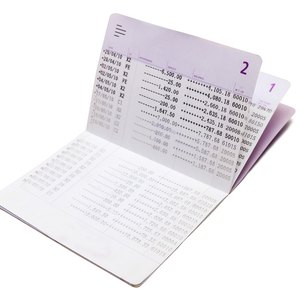
It's good to get into the habit of reviewing your checking statements as you receive them to monitor your account activity and confirm everything is correct. However, sometimes the terms banks and financial institutions use can be confusing. You might have noticed different codes used by your bank on your checking statement items such as your debits and credits. One such bank code, the force pay item code, is for debits out of your account.
Tips
A force pay item on your checking account statement indicates the bank has given that pending purchase or check priority over your other pending transactions.
Force Pay Codes
Banks have internal coding systems that determine transaction processing, including order. A bank uses a "force pay" code to give a debited item priority over other pending transactions that haven't cleared out of your account yet. For example, if you have pending purchases of $4.29 and $5.67 and a force pay item of $12 appears, the bank will take the $12 out of your account before processing the $4.29 and $5.67. If you do not have enough funds to cover the other charges, these items may not be processed and could be returned, possibly incurring you fees.
Checks Drawn from Bank
Banks have their own internal policies that determine what items get coded as a "force pay." One common use of force pay items by a bank involves the cashing of checks drawn from an account at that bank. For example, John writes a check off his Main Street Bank account for $25 to Emily. When Main Street Bank cashes that check for Emily, they use a force pay code on the $25 transaction from John's account.
Insufficient Funds
A bank may use force pay if they covered a transaction your account didn't have the funds to cover the day before, but this will not prevent any applicable overdraft fees. The force pay transaction is usually processed once you made a deposit that brings your account back into the positive. You're still liable for the overdraft because your account was or went into the negative by the debit, even though the bank covered it.
Overdraft Rules
Changes in federal law prevent banks from processing debit and ATM transactions you don't have the cash in your account to cover without your permission. Your card is declined if your account doesn't have enough funds to cover your debit purchase or ATM withdrawal unless you opt in for overdraft protection through your bank. This doesn't apply to checks or payments you scheduled, however, so these may still appear as force pay items if they overdraft your account.
References
Writer Bio
Anna Assad began writing professionally in 1999 and has published several legal articles for various websites. She has an extensive real estate and criminal legal background. She also tutored in English for nearly eight years, attended Buffalo State College for paralegal studies and accounting, and minored in English literature, receiving a Bachelor of Arts.

